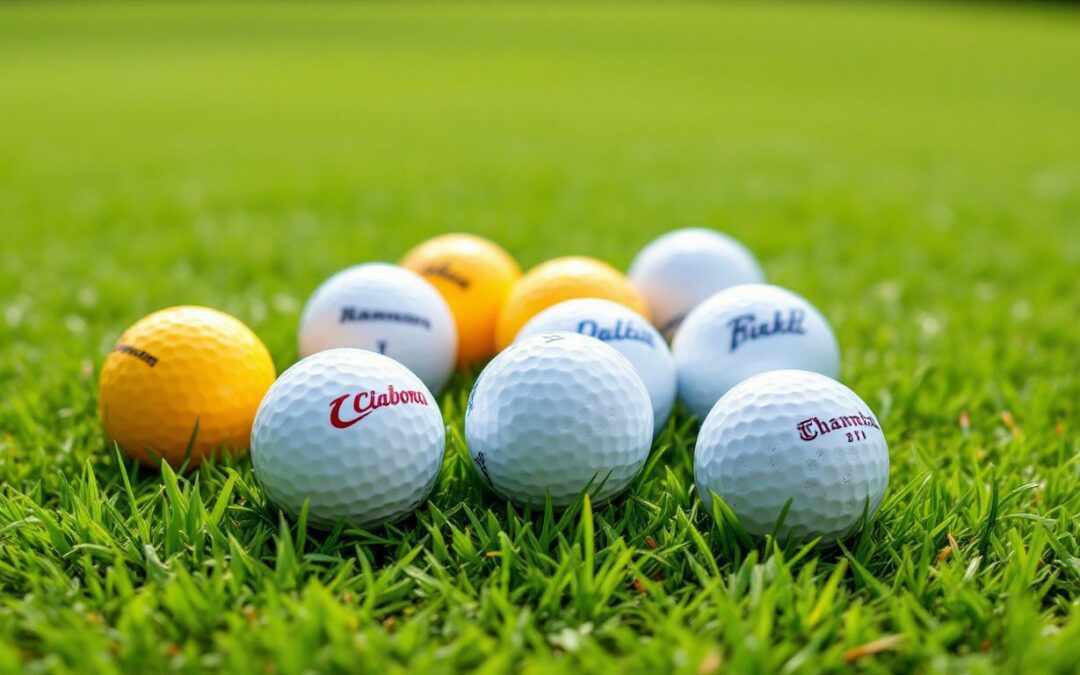In the vast space of golf, where each swing narrates a fresh tale, it is the unnoticed hero that usually remains unrecognized in broad daylight: the modest golf ball. When an artist uses a brush to a canvas, so is the right ball to your gameplay; it can be good or you can mess up at hole six with it. While we explore this atypical journey, be ready for a joyful detour through dimple counts and core materials that are dedicated to starters as well as skilled professionals.
Key Takeaways
- Beginners benefit from two-piece golf balls like Callaway Supersoft or Bridgestone E6. These provide durability, distance, and straighter shots at a low cost.
- Advanced players prefer multi-layered options like Titleist Pro V1X or TaylorMade TP5 for better spin, control, and performance during professional-level play.
- Urethane covers deliver soft feel and high spin for short-game precision, while durable Surlyn covers offer straighter shots with lower spin ideal for beginners.
- Swing speed impacts ball choice: Slower speeds suit low-compression balls (e.g., Wilson Duo), while faster swing speeds perform best with high-compression models (e.g., Pro V1x).
- Budget-friendly options include basic two-piece designs priced under $1 per ball, whereas premium four- or five-piece balls are suited for advanced players seeking peak performance.
Overview of Golf Ball Types
Golf balls come in many types, each offering distinct benefits. Players of all skill levels can find a ball that fits their game. Understanding these options is key to improving performance on the course.
There are four main types: two-piece, three-piece, four-piece, and five-piece golf balls. Each type has a different design and purpose. For example, beginners often prefer two-piece golf balls because they offer durability and distance at an affordable price.
Advanced players might lean toward multi-layered options like four- or five-piece models for better precision and spin control. Golfers should know how construction impacts performance before choosing the right ball for their needs..
Two-Piece Golf Balls
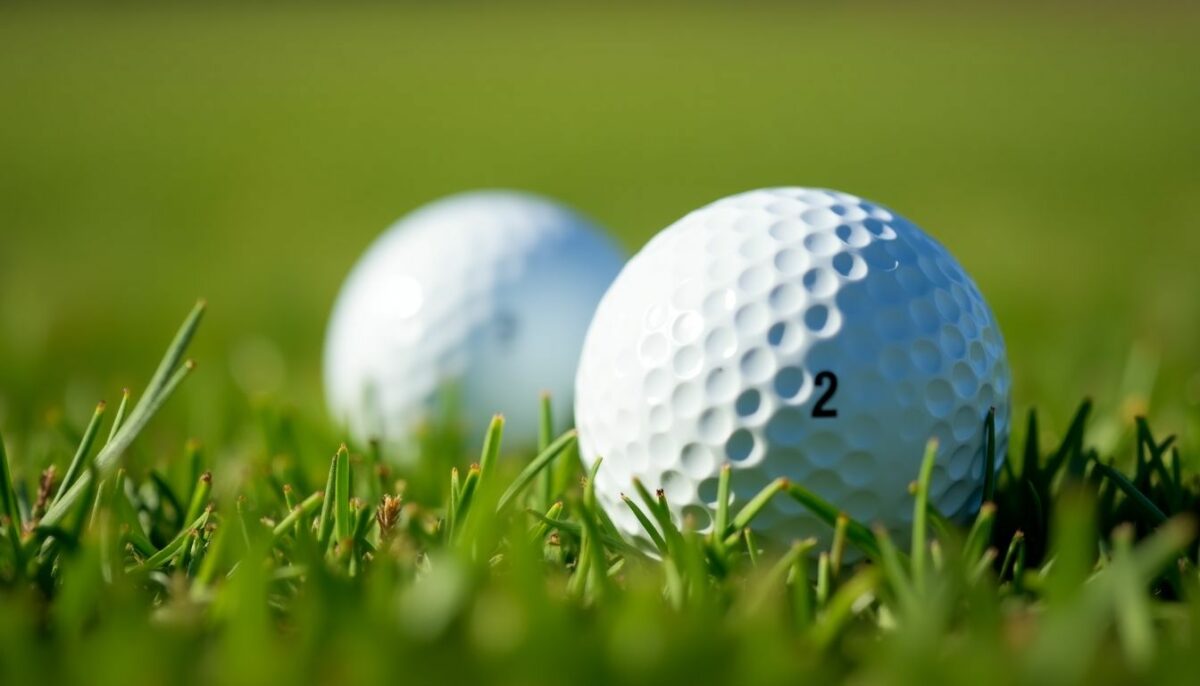
Two-piece golf balls are simple yet effective. They combine durability with distance, making them a solid choice for many golfers.
Features of Two-Piece Golf Balls
Two-piece golf balls are known for their durability and affordability. Their firm cover makes them tough, handling repeated strikes without wearing out fast. High compression allows these balls to deliver excellent distance with minimal spin, making them fly straighter off the driver.
They also launch higher, benefiting players who struggle with height in their shots.
Priced around $1 or less per ball, it’s a budget-friendly choice for golfers of all skill levels. The design focuses on reducing unwanted side spin, so mishits are less punishing.
Ideal for long drives, these balls sacrifice some control near greens but excel in hitting fairways.
“For anyone aiming straight and far without breaking the bank—this ball is your best friend.”
Ideal Players for Two-Piece Golf Balls
Beginners and high-handicap golfers often benefit from two-piece golf balls. These balls deliver straight shots, even with slower swing speeds. They have a durable surlyn cover, which resists damage and helps lower costs.
Players wanting more distance will appreciate their design. The solid core maximizes energy transfer for longer drives. For those still mastering control, the low spin reduces slicing or hooking off the tee.
Three-Piece Golf Balls
Three-piece golf balls have a layered build that boosts performance. They balance control, spin, and distance for players who want more than just the basics.
Structure and Benefits of Three-Piece Golf Balls
A three-layer design sets the three-piece golf ball apart. Its core, often rubber or liquid-filled, generates power for longer shots. The middle layer enhances spin control and connects the core to the soft urethane cover.
This cover improves grip on clubfaces, boosting precision in short games while providing a softer feel.
This structure balances distance and spin performance. Professional golfers favor it for better control during high-skill play. Slower swing speeds may see reduced yardage due to urethane’s qualities but can still benefit from added accuracy around greens.
These balls suit intermediate players aiming to refine skills without sacrificing versatility or touch.
Who Should Use Three-Piece Golf Balls?
Golfers aiming for better spin and feel around the greens should consider three-piece golf balls. These balls work well for mid-handicappers and professional golfers. They provide more control on short game shots while still delivering solid distance.
Players with faster swing speeds benefit from their design, which promotes higher spin rates. This helps scratch golfers or those looking to improve accuracy during approach shots.
For anyone who focuses on performance in both long drives and precise chipping, this type is a solid choice.
Four-Piece Golf Balls
Four-piece golf balls are masterfully constructed with multiple layers to boost performance. They offer a mix of distance, spin control, and feel, making them an intriguing choice for serious golfers.
The Unique Construction of Four-Piece Golf Balls
A four-piece golf ball features layers working together for top-notch performance. At its heart lies a solid rubber core that boosts distance. Surrounding this is an inner mantle, which transfers energy effectively.
Next comes the outer mantle, helping with spin control and stability in flight. Finally, a thin urethane cover offers precision and “drop and stop” action on greens.
This setup balances power with accuracy, making it ideal for skilled players who demand more from their shots. Spin control enhances short-game mastery while ensuring long drives stay true.
Performance benefits take center stage next under “Performance Advantages of Four-Piece Golf Balls.”.
Performance Advantages of Four-Piece Golf Balls
This design offers incredible precision. The four-layer structure improves spin control on short shots, allowing a “drop and stop” effect near the hole. Golfers chasing accuracy in their approach will notice this difference immediately.
Higher swing speeds bring out its true potential. These golf balls transfer energy efficiently, producing greater distance off the tee while keeping control intact around greens. Professional golfers often choose them for their balanced performance in every aspect of the game.
Five-Piece Golf Balls
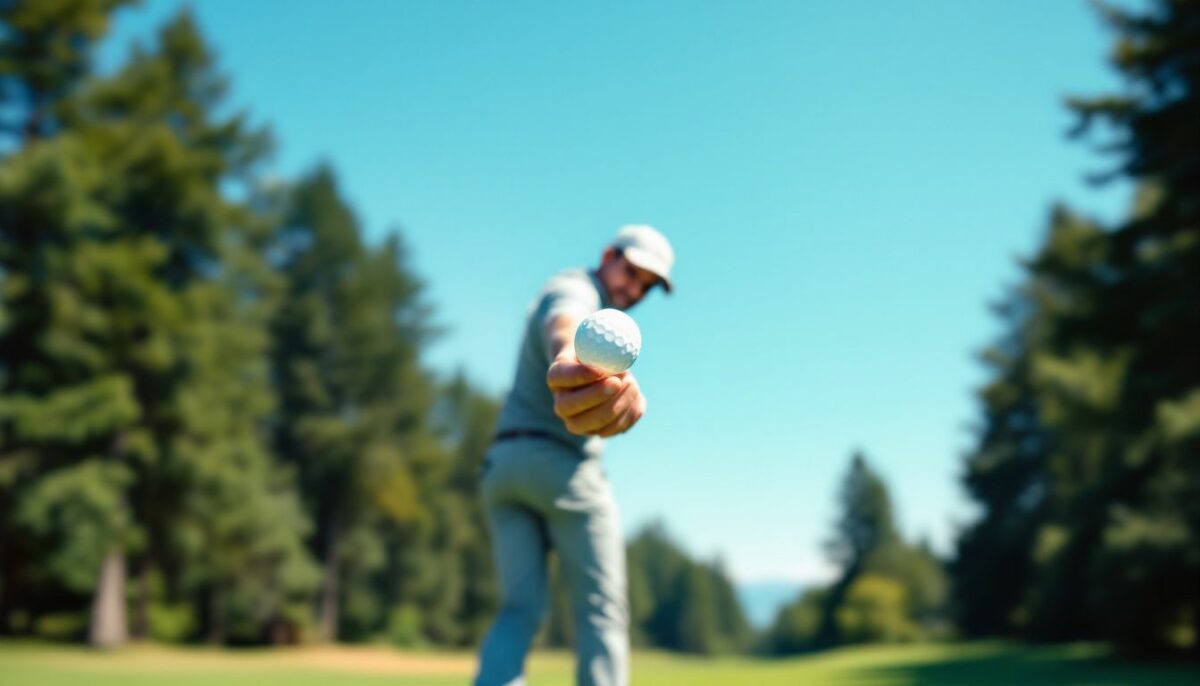
Five-piece golf balls pack serious technology into tiny layers. They cater to players chasing maximum performance in distance, spin, and control.
Advanced Design of Five-Piece Golf Balls
Five layers work together to deliver top performance in these golf balls. Each layer serves a specific purpose, enhancing distance, spin control, and feel. The core maximizes energy transfer for powerful shots, while the inner layers fine-tune spin during different strokes.
The outer urethane cover offers excellent grip on wedges and putters. These balls balance soft landings with explosive drives, appealing to skilled players who demand both precision and power in every swing.
– Target Audience for Five-Piece Golf Balls
Target Audience for Five-Piece Golf Balls
Professional golfers often lean toward five-piece golf balls for their precision. These balls shine in performance due to advanced technology, offering unmatched short-game spin and control.
Players with higher swing speeds benefit the most from these premium options, as they optimize power and accuracy during play.
Beginners or casual players may find them less suitable. Lower swing speeds don’t fully activate the ball’s layers, limiting its potential benefits. The higher price point also makes these golf balls an investment aimed at serious athletes seeking peak performance on demanding courses.
Golf Ball Cover Materials
The cover of a golf ball plays a big role in its feel and performance. Some covers offer better spin, while others boost durability or distance.
Urethane Covers and Their Benefits
Urethane covers bring softness and control to golf balls. They deliver better spin for short shots, making them ideal for advanced players who care about precision. Many three-piece or multi-layered golf balls use urethane for this reason.
Players feel a noticeable difference in how the ball reacts on approach shots and chips.
This material is softer than Surlyn but still durable enough for regular play. While it may slightly affect distance for slower swing speeds, it shines with faster swings. Professional golfers often prefer urethane because of its balanced performance.
Those curious about Surlyn covers will find another option worth exploring next!
Surlyn Covers and Their Impact on Performance
Surlyn covers are tough and durable. They resist cuts and scuffs, even on rough surfaces or off-center shots. Many two-piece golf balls feature this material, making them ideal for beginners or players seeking long-lasting performance.
These covers deliver lower spin compared to urethane. This reduces slice or hook tendencies, ensuring straighter shots. While less soft than urethane, Surlyn still provides decent feel without sacrificing distance.
Golfers aiming for durability over softness might prefer Surlyn-covered balls.
Compression Levels in Golf Balls
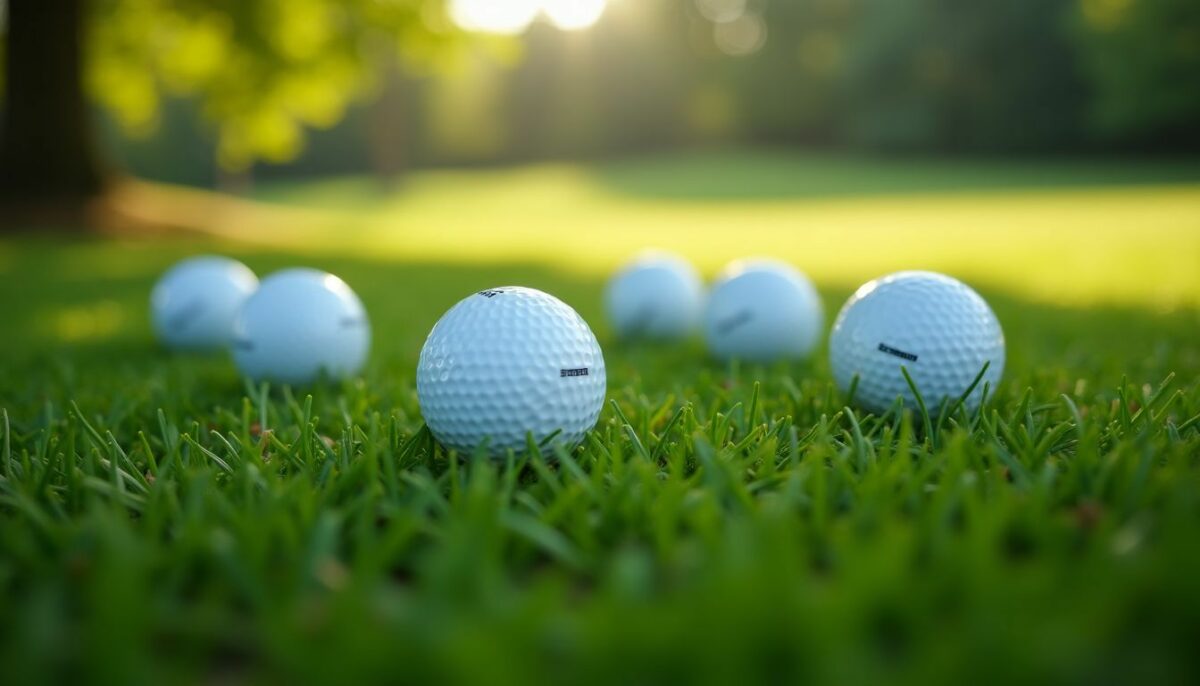
Compression affects how a golf ball feels and reacts when hit. Choosing the right compression can impact distance, control, and comfort during your game.
Low Compression Golf Balls for Beginners
Low compression golf balls suit beginners and high-handicap players with slower swing speeds. They typically reduce spin, fly straighter, and limit hooks or slices. Most are two-piece golf balls like the Bridgestone E6, Callaway Supersoft, and Wilson Duo.
These options balance performance with affordability, often costing around $1 per ball.
These balls deliver a firmer feel compared to multilayered designs but may lack lift for very slow swings. While they trade some spin control for faster speed off the clubface, they help new golfers focus on improving distance and accuracy without breaking the bank.
High Compression Golf Balls for Advanced Players
High compression golf balls deliver power and precision for experienced players. With higher swing speeds, these balls maximize energy transfer, increasing distance and accuracy. They often feature a multi-layer construction like four-piece or five-piece designs, perfect for professionals.
Their firm cores create faster ball speed but may reduce softness in feel.
Personalization options add flair to these performance golf balls. Players can customize with names, logos, or messages. While great for advanced golfers seeking control and velocity, they aren’t ideal for beginners or slow swingers as the firmness demands more skill to handle effectively.
These are best paired with high-end clubs for optimal results on the course!
Golf Ball Spin Categories
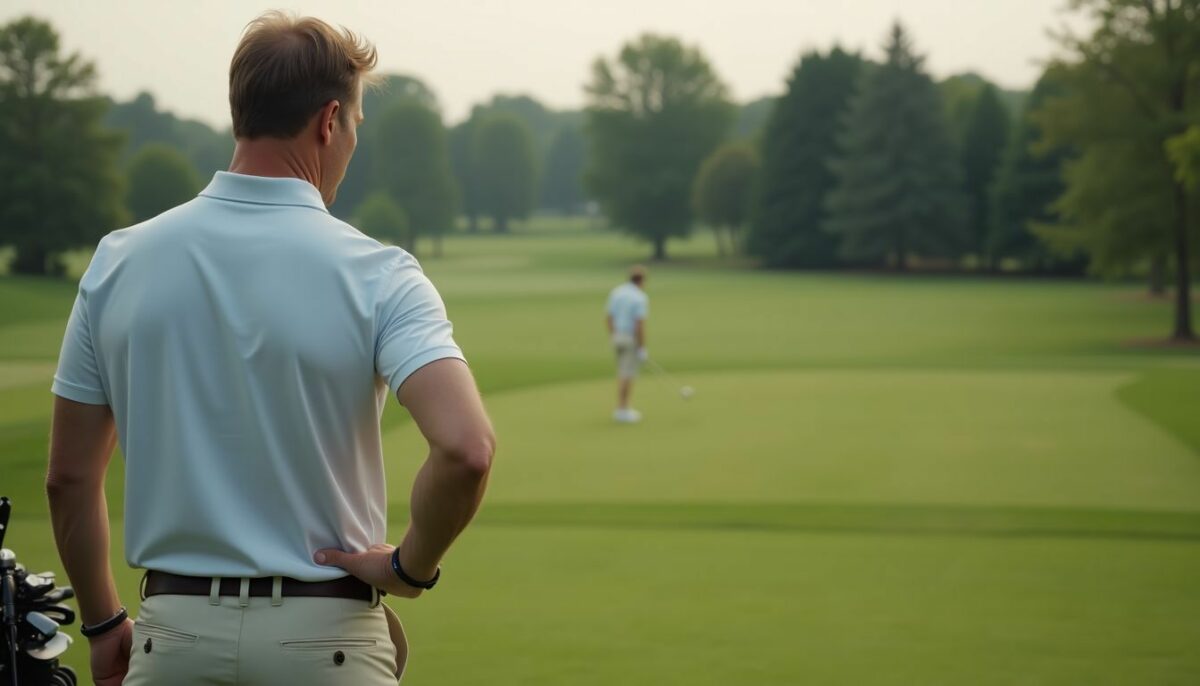
Spin plays a big role in how a golf ball behaves on the course. The right spin can improve control, boost distance, or help with straight shots.
Low-Spin Golf Balls for Straight Shots
Low-spin golf balls reduce side spin, helping shots fly straighter. This makes them great for beginners or high-handicap players who want more control. Two-piece designs like the Callaway Supersoft and Bridgestone E6 are popular options in this category.
They offer a durable cover and help golfers achieve longer distances with less curve.
These balls also work well with slower swing speeds, as they need less power to perform. A soft core limits excessive spin while boosting forgiveness on off-center hits. Golfers looking to avoid slices or hooks often choose low-spin models for consistent performance on every stroke.
Mid-Spin Golf Balls for Balanced Performance
Mid-spin golf balls hit the sweet spot between distance and control. They offer a balanced performance that suits many skill levels, especially mid-handicap golfers. These balls combine features of two-piece and three-piece designs, offering solid yardage without sacrificing feel around the greens.
Their softer covers improve spin for chips and pitches while maintaining enough firmness to fly far off the tee. Golfers who want versatility in changing course conditions often choose this type.
Mid-spin options work well for players improving their skills but not ready to give up either control or power.
High-Spin Golf Balls for Enhanced Control
High-spin golf balls help players gain better control on the greens. Their thin urethane cover increases spin, especially during short shots. This design creates a “drop and stop” effect that keeps the ball close to where it lands.
Professional golfers love these features for accuracy and precision.
These balls often have multiple layers, like those found in Titleist Pro V1X or Srixon Z-STAR XV. The complex core construction suits fast swing speeds but isn’t ideal for slower ones.
Beginners might find them less forgiving due to their higher price and advanced technology.
Factors to Consider When Choosing a Golf Ball

Choosing the right golf ball isn’t rocket science, but it takes knowing your style, needs, and game goals—keep reading to find the one that fits you best!
Swing Speed
Swing speed plays a big role in golf ball performance. For beginners with slower swings, low-compression or two-piece golf balls work best. These give more distance and control without needing extra force.
Advanced players with faster swing speeds benefit from high-compression or four- and five-piece golf balls, which enhance spin and feel for precise shots.
Matching the ball to swing speed can improve your game instantly. For example, slower swings under 85 mph match well with soft-feel options like Callaway Supersoft. Faster swings above 100 mph align better with performance-focused balls like Titleist Pro V1x.
Picking the right type boosts both confidence and results on the course.
Playing Conditions
Wet grass can slow ball speed and reduce roll distance. Soft greens allow high-spin golf balls to stop quickly, while firm greens might make them bounce more.
Windy days call for low-spin golf balls. They cut through the air better, keeping shots straighter in gusts. Dry fairways can boost bounce and add extra yards to drives.
Budget
Golf balls come in a wide price range, suiting every type of player. Two-piece golf balls are budget-friendly and cost about $1 or less per ball. These work well for beginners or those wanting to stretch their dollar without sacrificing durability.
On the other hand, three-piece golf balls offer added performance features but demand a higher price tag, making them ideal for mid-handicappers who want more spin and control.
For advanced players seeking top-tier performance, four-piece and five-piece golf balls stand out but often carry the highest costs. Brands like Titleist, Callaway, and Bridgestone deliver options across all budgets.
Custom golf balls from sites like GolfBalls.com provide personalization while keeping expenses reasonable for casual golfers or pros alike! Choose wisely based on your skill level and wallet size—there’s always something available that fits both.
Comparison of Top Golf Ball Brands
Choosing the right golf ball brand can feel like picking a needle from a massive haystack. Each brand brings its own flair, offering something different for distance, spin, and control.
Titleist Pro V1 and Pro V1x
Titleist Pro V1 offers a softer feel with lower spin on long shots. It balances distance and control, making it a favorite for many golfers. Its aerodynamic dimple pattern improves flight stability, even in windy conditions.
Pro V1x stands out with higher ball flight and more spin. Players looking for added greenside control often choose this option. Both models feature durable urethane covers and high-performance cores, ensuring excellent shot consistency every game.
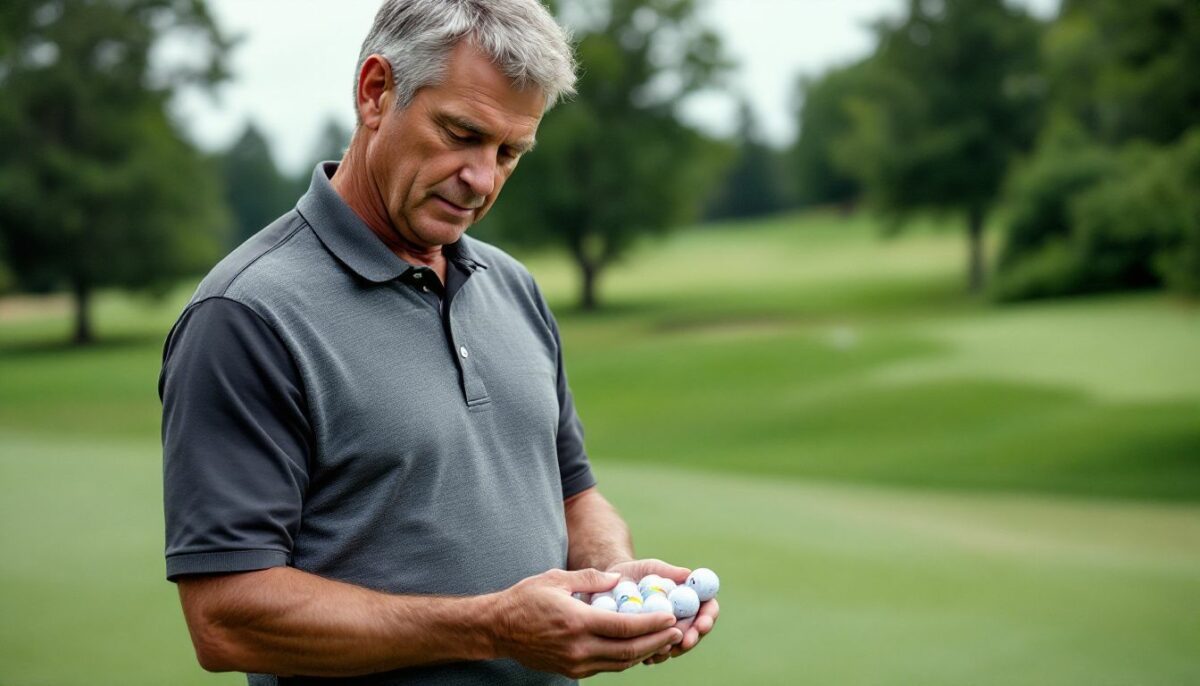
Callaway Chrome Soft and Supersoft
Callaway Chrome Soft golf balls are crafted for distance and precision. They offer excellent greenside control, thanks to their soft feel and urethane cover. The Chrome Soft X adds a firmer touch for faster swings, delivering more speed and spin control during play.
These models suit players aiming for consistent accuracy without sacrificing performance.
The Supersoft caters to golfers who value straight shots with added distance. Its low compression core makes it forgiving on slower swing speeds while maintaining top-notch ball flight stability.
Ideal for beginners or those seeking smooth handling at an affordable price point, it blends ease of use with impressive results.
Next up: TaylorMade TP5 and TP5x models!
TaylorMade TP5 and TP5x
TaylorMade’s TP5 and TP5x golf balls bring top-tier performance to the course. Both feature advanced five-piece construction, offering a perfect blend of speed, spin control, and soft feel.
The high-performance cores maximize energy transfer for longer distances, while their durable urethane covers enhance spin around greens. A unique dimple pattern reduces drag, ensuring stable flight even in windy conditions.
The TP5 provides a softer feel with more spin for precision shots, ideal for golfers prioritizing control. The TP5x is firmer and delivers higher launch with less spin off the driver, making it better suited for players seeking extra distance without compromising consistency.
Professional golfers often trust these models due to their adaptability across various playing conditions.
Bridgestone Tour B Series
The Bridgestone Tour B Series stands out for its advanced core technology and durable covers. This lineup includes the Tour B RX, RXS, X, and XS balls. They feature a unique dimple pattern that improves flight consistency and control during every swing.
Professional golfers often praise these performance golf balls for their blend of distance, spin control, and feel.
Golfers with faster swing speeds may favor the Tour B X or XS models for exceptional accuracy. Those looking for softer feels might prefer the RX or RXS options instead. Despite their high-level features, Bridgestone also offers budget-friendly alternatives like the E6 ball without sacrificing quality too much.
Srixon Z-Star and Soft Feel
Srixon Z-Star balls pack advanced tech for serious players. The FastLayer core provides a softer center and firm edges, boosting speed and distance. Spin Skin coating enhances spin control on greenside shots.
These golf balls offer high performance for golfers with faster swing speeds.
Soft Feel suits those who value comfort during play. Its soft core delivers better compression at slower swings, making it ideal for beginners or moderate-speed players. Both models show Srixon’s focus on quality golf ball performance across skill levels.
Best Golf Balls for Beginners
Beginners often benefit from low-compression, two-piece golf balls. These balls offer better distance and straighter shots with slower swing speeds. The Titleist Velocity and Callaway Supersoft are excellent choices under $1 per ball, providing a soft feel without breaking the bank.
Wilson Duo and Srixon Soft Feel stand out for their forgiving nature and consistent flight. Affordable options like Bridgestone E6 or TaylorMade RBZ also balance performance with price, helping new golfers build confidence on the course.
Best Golf Balls for Intermediate Players
Intermediate players benefit from golf balls that balance control and distance. The Srixon Z-STAR offers great spin for short-game precision, while its urethane cover boosts feel on the green.
TaylorMade Project (A) excels with three-piece construction, catering to those improving swing speed and accuracy. These models give better feedback during shots without sacrificing performance.
Titleist Pro V1 stands out as a premium option for consistent trajectory and soft landings. Callaway ERC Soft is another solid choice, offering a mix of forgiveness and enhanced roll for longer putts.
Bridgestone Tour B RX targets mid-level golfers seeking less spin off the driver but plenty around greens. For advanced players next steps focus on mastering premium multi-layered options!
Best Golf Balls for Advanced Players
Titleist Pro V1X tops the list for many advanced players. Its high-spin design offers incredible control on approach shots. Callaway Chrome Soft X delivers a soft feel but packs plenty of distance and accuracy.
TaylorMade TP5 stands out with its five-piece structure, maximizing performance across all clubs.
Srixon Z-STAR XV suits golfers looking for piercing ball flight and superior greenside spin. Mizuno RB Tour combines low driver spin with excellent short-game responsiveness. Vice Pro Plus offers tour-level features at a budget-friendly price, appealing to pros keeping an eye on costs without sacrificing quality.
Personalized and Custom Golf Balls
Personalized golf balls add a touch of individuality to your game. They’re great for gifts, branding, or simply standing out on the course.
Benefits of Personalized Golf Balls
Custom golf balls make every game feel special. Players can add up to three lines of text with four font options and five ink colors. This helps improve visibility and makes the ball easy to identify on busy courses.
AlignXL personalization adds a 180-degree alignment aid for putting accuracy. It offers clear guidance, helping golfers line up their shots better. These small details boost confidence while adding a personal touch to gear.
Golf Ball Performance Myths
Some golfers swear by pricey balls for better play, but myths about distance and control can confuse even seasoned players—dive deeper to spot the truth.
Distance vs. Control Debate
Hitting long drives feels great, but control wins games. A ball that flies far may roll off the green, while a control-focused golf ball stops where you want. Two-piece golf balls often give more distance due to their harder cores.
On the other hand, softer three-piece or urethane-covered balls improve spin and aim for tighter short-game shots.
Players with slower swings might prefer low-compression balls for added yardage. Advanced players usually choose high-spin options to shape shots around tricky greens. Balancing these factors depends on skill level and priorities—distance off the tee or precision near the pin?
Do Expensive Golf Balls Really Perform Better?
High-priced golf balls often boast advanced technology. Multi-layer designs, urethane covers, and optimized spin rates can improve performance for skilled players. Professional golfers might notice better control or distance with premium options like the Titleist Pro V1 series.
For beginners with slower swing speeds, differences may feel minimal. Cheaper two-piece golf balls usually offer durability and strong distance without breaking the bank. The key lies in matching a ball to skill level rather than just its price tag.
Frequently Asked Questions (FAQs)
Got questions about golf balls? This section clears up the confusion, answering common queries to simplify your game.
What Makes a Golf Ball “Soft”?
A golf ball feels “soft” because of its low compression rating. Compression refers to how much the ball squishes when hit. Low-compression golf balls, usually rated between 30 and 60, deform more upon impact.
This creates a softer feel for the player and often helps beginners or players with slower swing speeds.
The cover material also affects softness. Many soft balls use urethane or thinner covers, which add to their smooth touch while providing better spin control around greens. These features make them popular among golfers who prefer extra comfort during play without sacrificing performance on short shots.
How Long Can a Golf Ball Last?
Soft golf balls enhance control, but durability depends on care. A well-kept golf ball can last dozens of rounds. Avoid hitting it against cart paths or trees to extend its life. Small scuffs or scratches can impact performance over time.
Many players switch balls after three 18-hole games for consistency.
Storage matters too. Extreme heat or cold weakens the cover and core structure, especially in urethane-covered balls. Keep them indoors at room temperature for best results. Regular use may affect spin control and distance as wear increases.
Does Temperature Affect Golf Ball Performance?
Cold weather can stiffen a golf ball, lowering its compression. This makes the ball lose distance and feel harder on impact. On the other hand, heat softens it slightly, increasing spin but potentially reducing control.
Professional golfers notice even small temperature changes during play. A colder day might mean switching to low-compression balls for better performance. Warm conditions could favor high-compression designs for more stability.
Always store your golf balls in moderate temperatures to maintain their quality year-round.
Conclusion: Finding the Right Golf Ball for Your Game
Choosing the right golf ball can change your game. Every type offers something different, from control to distance. Match the ball to your swing and skills for the best results. Keep experimenting until you find one that feels just right.
The perfect golf ball isn’t far – it’s out there!
FAQs
1. What are the main types of golf balls?
Golf balls come in several types, including two-piece, three-piece, and four-piece designs. Each type offers different performance features for varying skill levels.
2. Why do professional golfers prefer urethane cover golf balls?
Professional golfers often choose urethane cover golf balls because they provide better spin control and enhanced performance around the greens.
3. How does a liquid center affect golf ball performance?
A liquid center can improve energy transfer during impact, giving players more distance while maintaining soft feel and spin control.
4. Are there benefits to customizing your golf ball?
Yes, golf ball customization allows players to match their game style with specific features like compression or brand preferences such as Titleist Golf.
5. How do I decide which type of golf ball suits my game?
Consider your skill level and goals. Beginners might favor two-piece golf balls for durability and distance, while advanced players may opt for multi-layered options for precision and spin control with their chosen golf club brand.

